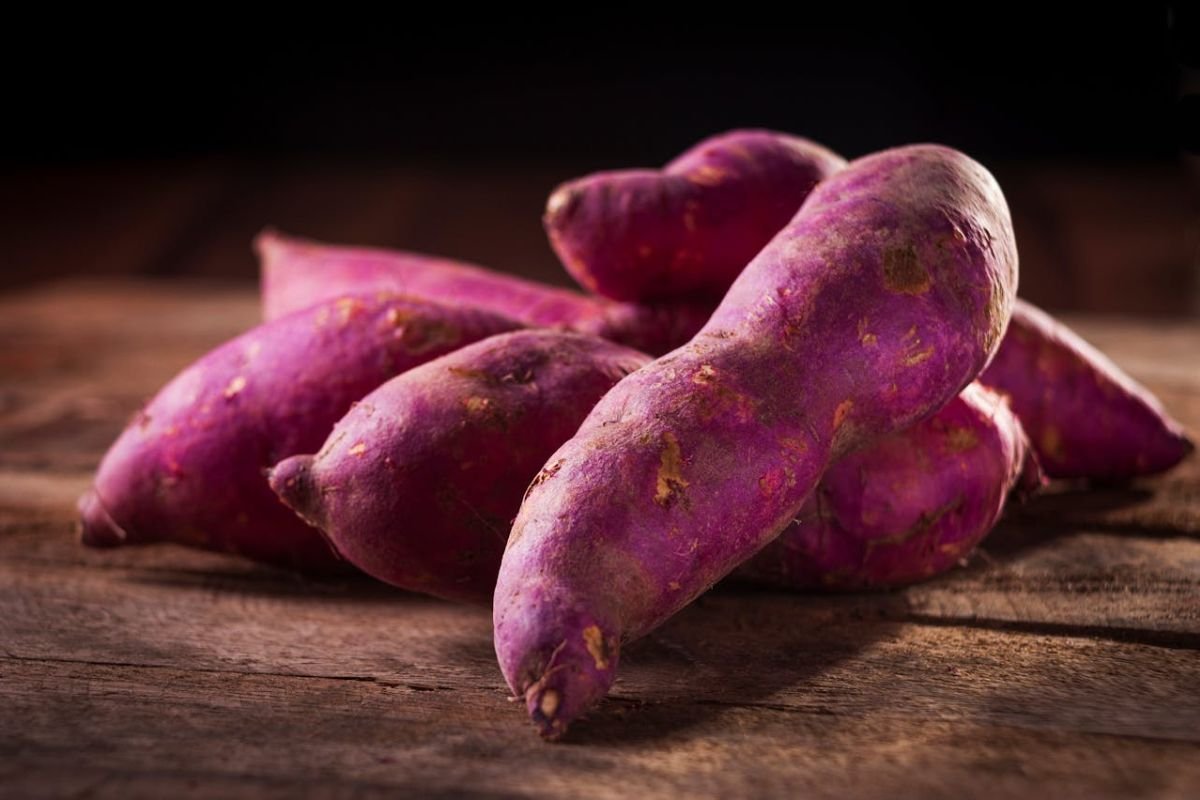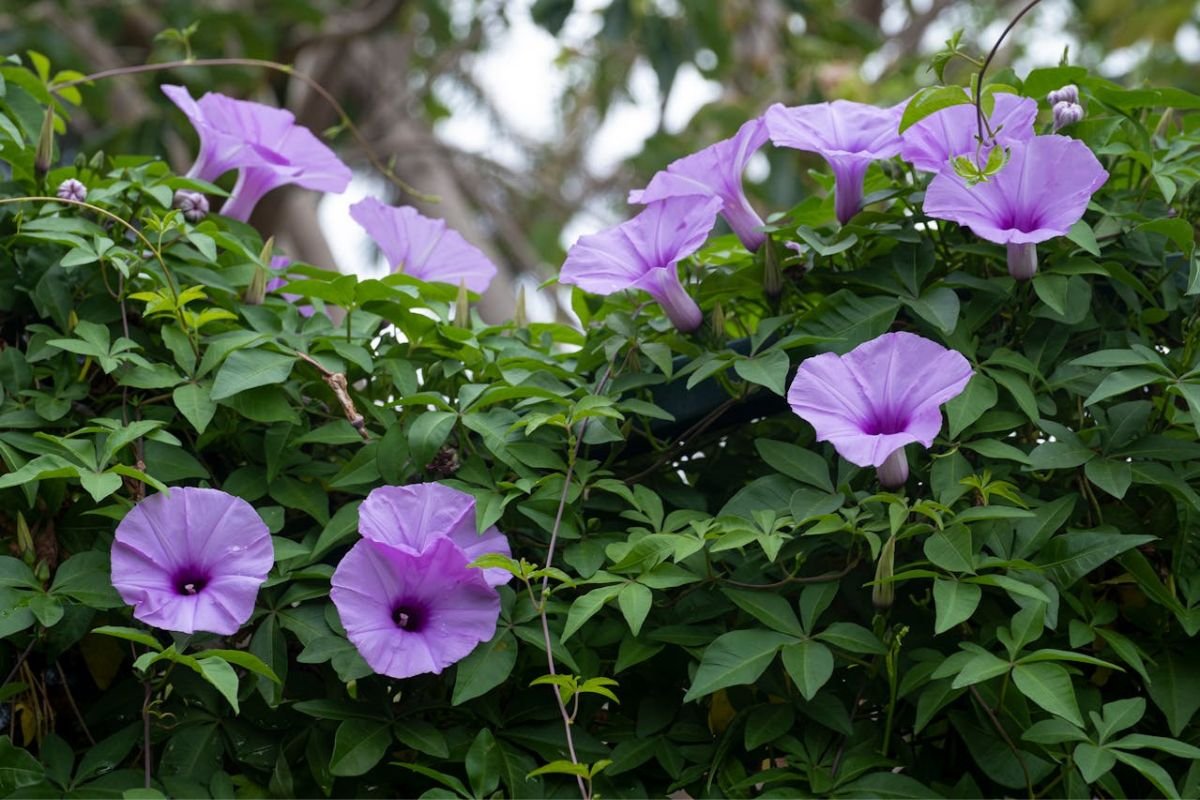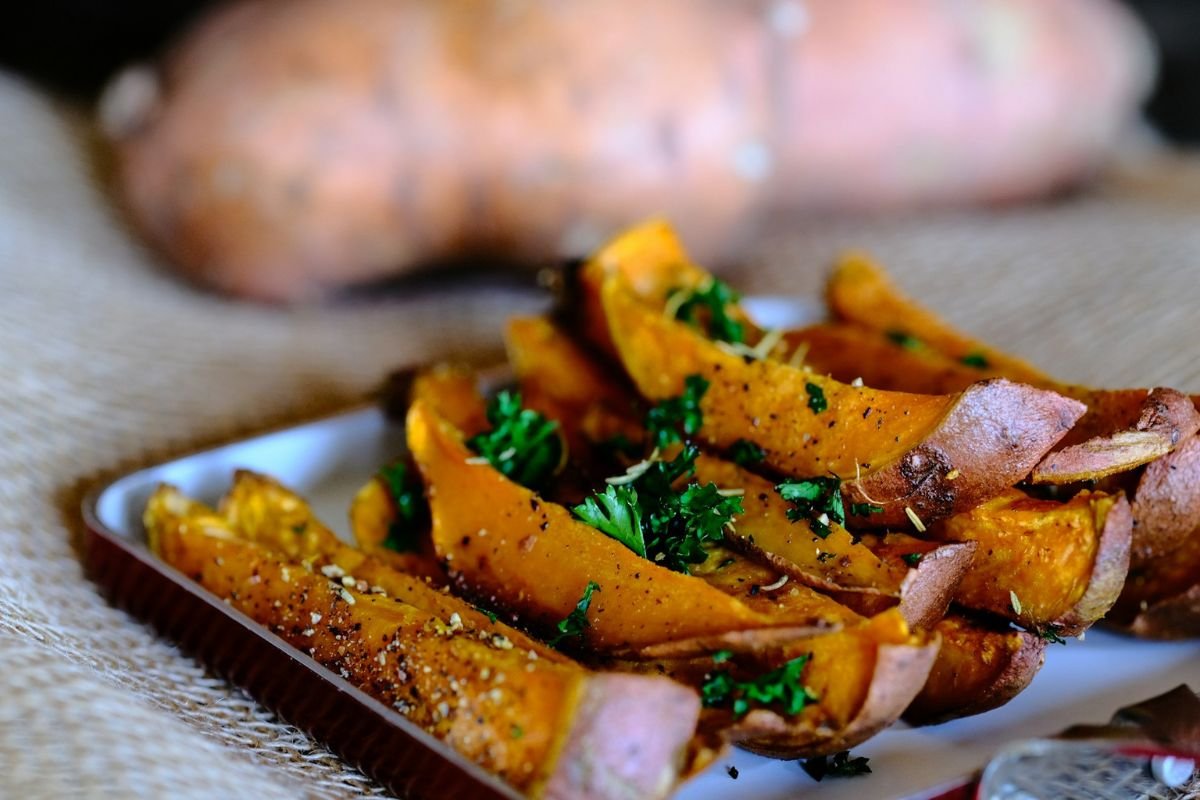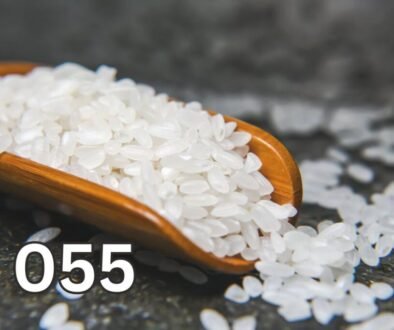The Sweet Potato Story: A Plant with a Fascinating History

05 AUGUST 2025
Today, let’s talk about a plant with a surprisingly remarkable past, the sweet potato. You’ve probably eaten it before, maybe roasted, mashed, or even as fries. But have you ever wondered what makes this seemingly ordinary food so special?
A Naturally Modified Marvel
Here’s something incredible: sweet potatoes are the world’s first known naturally genetically modified crop. Unlike modern GMOs, which are engineered in labs, this modification happened completely on its own. Scientists discovered that thousands of years ago, likely around 8,000 years ago, genes from a bacterium called Agrobacterium inserted themselves into the sweet potato’s DNA. Nature, in a rare twist, performed its own genetic engineering!
That’s just one reason why sweet potatoes stand out, but there’s more.
Are Sweet Potatoes and Potatoes Related?
Since “sweet potato” has potato in its name, it’s easy to assume they’re related. But the truth? They’re not even close!
Both grow underground, but they’re not the same type of structure.
- Potatoes are tubers, which means they’re swollen stems that store energy.
- Sweet potatoes are root tubers, meaning they’re thickened roots. That’s a big difference!
And when it comes to classification, the divide is even bigger:
- Potatoes belong to the Solanaceae family, also known as the nightshade family, which includes tomatoes, eggplants, and peppers.
- Sweet potatoes belong to the Convolvulaceae family, within the Ipomoea genus, the same group as morning glories!
So while they both fall under the Solanales order, they aren’t closely related at all.
A Morning Glory with a Twist
Here’s another surprising fact: most plants in the Ipomoea genus don’t grow edible tubers at all! Out of over 600 species, almost all are morning glories, those beautiful trumpet-shaped flowers that bloom in the wild.

Sweet potatoes are a rare exception. Somehow, one species took a completely different evolutionary path, developing large, edible roots that eventually became a global dietary staple.
For a plant that started out as just another flowering vine, that’s a pretty remarkable journey!
Where Did It All Begin?
So, if sweet potatoes are part of the morning glory family, what was their wild ancestor? And where did they originate?
Like potatoes, sweet potatoes first appeared in the Americas. But the story of how they evolved, and how they spread across the world, is even more fascinating.
Let’s keep exploring.
The Genetically Modified Plant from 8,000 Years Ago
A Name with a Story
The scientific name of the sweet potato is Ipomoea batatas, and the word batata has a rich history. It comes from the Taíno people of the Caribbean, who cultivated sweet potatoes long before Europeans arrived.
If batata sounds familiar, you’re not imagining things! When Spanish explorers encountered this crop in the Americas, they adopted the Taíno word. Later, they used a variation, patata, for another underground crop they discovered: the potato. Over time, patata became potato in English.
So while sweet potatoes and potatoes aren’t closely related, their names became intertwined through language!
Tracing the Sweet Potato’s Ancestry
We now know that the sweet potato originated in the Americas, but for years, its wild ancestor remained a mystery.
Scientists discovered early on that the sweet potato has a hexaploid genome, meaning it evolved from the hybridisation of two different species: one diploid and one tetraploid. The diploid ancestor was identified early:
- Ipomoea trifida – a type of morning glory native to Central and South America, with thin, pencil-sized roots that hold no edible value.
But this raised another question: What was the second ancestor?
The Missing Link: Found After Nearly a Century!
For almost 100 years, scientists searched for the tetraploid ancestor, the missing piece of the puzzle. Then, in 2022, researchers from Oxford University and their collaborators made an exciting discovery.
They found a wild morning glory species growing in Ecuador, with white and purple flowers and thin, inedible roots. Genetic analysis confirmed that this plant was very likely the long-lost tetraploid ancestor of the sweet potato!
The team named it Ipomoea aequatoriensis, or “Equator Morning Glory.”
How the Sweet Potato Came to Be
At some point in history, Ipomoea aequatoriensis and Ipomoea trifida naturally hybridised, combining their genetic material. This rare event led to the creation of a new species, the hexaploid sweet potato that would later be domesticated and spread across the world.
This means the sweet potato’s evolution wasn’t just a result of human cultivation and selective breeding. It was shaped by an unusual genetic history, making it one of the most fascinating crops in the world!
A Natural Mystery: How Did Sweet Potatoes Develop Storage Roots?
The story of sweet potatoes is full of fascinating twists, from their wild ancestors to the way they evolved into the delicious, nutrient-packed tubers we know today. But one mystery remains, how did sweet potatoes develop their iconic starchy roots, unlike regular potatoes?
The Strange Difference Between Potatoes and Sweet Potatoes
Wild potatoes naturally grow tubers (swollen stems) underground. While early wild potatoes were smaller and more toxic, they still had tubers long before humans cultivated them into the starchy, edible varieties we know today.
But sweet potatoes are different.
Neither of their wild ancestors developed thick, starchy storage roots. Both Ipomoea trifida and Ipomoea aequatoriensis had only thin, fibrous roots, nowhere near the size of a sweet potato.
So how did their hybrid offspring suddenly develop large, edible storage roots?
This remained a major mystery, until scientists took a closer look at the sweet potato’s genome.
A Groundbreaking Discovery in 2015
In 2015, researchers analysed the genomes of 291 sweet potato varieties from around the world, sampling plants from South America, North America, Asia, and Africa. These varieties represented nearly every major type of sweet potato globally.
What they found was astonishing:
Every single variety contained a segment of DNA that didn’t come from a plant at all, it came from a bacterium called Agrobacterium.

The World’s First Naturally Genetically Modified Crop
Scientists are very familiar with Agrobacterium, and here’s why:
- This bacterium has a unique ability. It can transfer a portion of its own DNA into plant cells through a process called horizontal gene transfer.
- This is the same method used today in laboratories to create genetically modified (GM) plants.
In simple terms, sweet potatoes naturally underwent genetic modification, thousands of years before humans even knew such a thing was possible!
Did This Natural Genetic Modification Shape the Sweet Potato?
So what does Agrobacterium’s DNA do?
Interestingly, it specifically affects plant roots. It can cause them to swell and form tumour-like growths. This led scientists to speculate that this natural genetic modification may have played a role in helping sweet potatoes develop their storage roots.
Unlike modern genetic modifications done in laboratories, this process happened naturally, in the wild. Researchers estimate it took place around 8,000 years ago.
It’s possible that Indigenous peoples in the Americas discovered morning glory plants with enlarged roots, found them useful as food, and began selectively cultivating them, eventually leading to the domesticated sweet potato we know today.
A Thought-Provoking Insight on GM Foods
Beyond solving a historical mystery, this discovery also has implications for the ongoing debate about genetically modified foods.
While extensive scientific research has found no evidence that GM foods are riskier than traditionally bred crops, public concern remains. Some people worry that since modern GM technology is relatively new, its long-term effects aren’t fully understood.
But here’s something to consider:
- The sweet potato has been a naturally genetically modified food for thousands of years, and humans have been eating it without issue.
- This example could serve as a useful reference when discussing the safety of GM foods today.
What do you think about genetically modified foods? Let’s talk in the comments!
What Do Sweet Potatoes Have to Do with Building Statues?
As a member of the morning glory family, the sweet potato also produces delicate, trumpet-shaped flowers. But have you ever seen one bloom?
Chances are, you haven’t! That’s because sweet potatoes require very specific conditions to flower: temperatures between 20–30°C (68–86°F) and less than 11 hours of daylight. These conditions are common in tropical regions, such as their native lands in Central and South America, where sweet potatoes flower more frequently.
In contrast, temperate climates tend to have longer summer days, making flowering much rarer. But when sweet potatoes do bloom, they also produce fruit, a small green capsule that eventually contains tiny black seeds.
How Are Sweet Potatoes Grown?
Unlike many other crops, sweet potatoes don’t typically grow from seeds because their offspring wouldn’t be genetically stable. Instead, they are propagated clonally, just like potatoes, but with one key difference:
- Potatoes are grown from seed potatoes, which are pieces of tubers planted in the soil.
- Sweet potatoes are grown from vine cuttings, 20 cm (8 inches) long with a few leaves attached. These cuttings are planted at an angle, with the leaves exposed above the soil.
Over time, humans selectively bred thousands of varieties, leading to an astonishing fact:
There are over 7,000 varieties of sweet potatoes, even more than potatoes!
A Polynesian Connection?
It’s widely believed that sweet potatoes spread globally during the Columbian Exchange. But there’s one fascinating exception, the South Pacific islands.
Archaeological evidence suggests that Polynesian explorers may have reached South America hundreds of years before Columbus. If true, this would mean they discovered sweet potatoes, brought them back to their islands, and made them a staple crop, long before European explorers arrived.
Intriguingly, linguistic evidence supports this theory:
- In Māori, the word for sweet potato is “kūmara.”
- In Quechua (an Indigenous language of Peru), a similar word exists, “kumar” or “cumara.”
The striking similarity between these words suggests an ancient connection between Polynesian and South American cultures, a theory that continues to intrigue historians and archaeologists today!
Sweet Potatoes and Civilisation
The expansion of Austronesian populations across the Pacific may have been fuelled, at least in part, by the sweet potato.

Take Easter Island (Rapa Nui), for example. The Rapa Nui people relied on sweet potatoes as one of their primary staple crops. Without this nutrient-rich, reliable food source, they might not have had the time, or the energy, to carve their famous stone statues, the moai. In a way, the sweet potato wasn’t just food; it was fuel for civilisation.
How Sweet Potatoes Went Global
While Polynesians spread sweet potatoes across the Pacific, the crop didn’t reach the rest of the world until European explorers took notice.When Columbus and other explorers encountered sweet potatoes in the Americas, they were immediately intrigued. Unlike potatoes, which were initially met with suspicion and fear in Europe (some even called them the “devil’s plant”), sweet potatoes were welcomed with enthusiasm, especially by the upper class, who loved their sweet taste and exotic appeal.
During the Age of Exploration, Europeans carried sweet potatoes across the globe, introducing them to Asia, Africa, and beyond. Over time, they became deeply integrated into global agriculture, thriving in tropical and subtropical climates.
Why Aren’t Sweet Potatoes a Staple Food?
Given their high yield and efficiency, it might seem surprising that sweet potatoes aren’t a dominant staple food worldwide. Today, global sweet potato production hovers around 100 million tons per year, with China producing over 55%. The rest is mostly grown in Africa, particularly in Malawi, Tanzania, and Angola.But despite their nutritional value and productivity, sweet potatoes are often seen as a side dish rather than a dietary staple.
The Most Productive Crop You’re Not Eating
Sweet potatoes are one of the most efficient crops on the planet. According to the UN Food and Agriculture Organization (FAO), when measuring caloric output per hectare per day, sweet potatoes rank first, producing around 70,000 kcal daily, more than any other crop.They are:
- Easy to grow
- Highly productive
- Energy-dense
So why haven’t they replaced grains like rice, wheat, or corn?
The answer lies in how they are consumed, which is exactly what we’ll explore next!
The Best Way to Eat Sweet Potatoes
Sweet potatoes are delicious and packed with nutrients, but if you’ve ever eaten a large serving and felt a little bloated or gassy, you’re not alone!
Why Do Sweet Potatoes Cause Bloating?
There are a few reasons why sweet potatoes can lead to digestive discomfort:
- Resistant Starch & Fibre – Sweet potatoes are high in fibre, which ferments in the gut, producing gas. While this is great for digestion, eating too much at once can cause bloating.
- Mannitol – Some sweet potato varieties contain mannitol, a natural sugar alcohol that can be tough for some people to digest, leading to bloating or mild discomfort.
- Gut Microbiota Response – The complex carbohydrates in sweet potatoes interact with gut bacteria, which can sometimes increase gas production.
Because of this, sweet potatoes haven’t always been a daily staple in many cultures. Historically, they were relied on in times of food scarcity, but given the choice, many societies have preferred grains like rice and wheat for everyday meals.
Different Types of Sweet Potatoes
Not all sweet potatoes are the same! They can be broadly classified into two main types:
1. Orange or Yellow-Fleshed Varieties
- Packed with beta-carotene, which gives them their vibrant colour and supports eye health and immune function.
- When cooked, they turn soft, creamy, and naturally sweet.
- Ideal for roasting, steaming, mashing, and frying. Perfect for snacks and desserts!
2. White-Fleshed Varieties
- Drier and starchier than their orange counterparts, with a milder sweetness.
- Traditionally used as a staple food in parts of Africa and Asia.
- Their savoury-friendly flavour makes them a great alternative to regular potatoes.
The Best Ways to Eat Sweet Potatoes
There are endless ways to enjoy sweet potatoes, but for me, roasted sweet potatoes are the absolute best. That golden, caramelised surface… just thinking about it makes my mouth water!

But if roasting isn’t your thing, here are other delicious ways to enjoy them:
- Fries – Crispy on the outside, soft on the inside, with just the right hint of sweetness.
- Soups & Stews – Blended into a creamy soup or added to stews for a rich, hearty flavour.
- Curries – Their natural sweetness balances spicy flavours beautifully.
- Deep-Fried Snacks – Think chips, fritters, or even tempura-style treats.
However you prepare them, sweet potatoes are a comforting, versatile addition to any meal!
Beyond the Sweet Potato Root
Sweet potatoes are often celebrated for their delicious, nutrient-packed tubers, but did you know that every part of the plant has something to offer? From edible leaves to stunning ornamental varieties, sweet potatoes are far more versatile than most people realise!
Edible Leaves: A Nutrient-Packed Bonus
Sweet potato vines aren’t just for decoration, they’re entirely edible! In many cultures, the tender tips and young leaves are enjoyed as a vegetable, much like water spinach (also known as morning glory).
How are sweet potato leaves eaten?
- Stir-fried with garlic and soy sauce for a quick, tasty side dish.
- Boiled and served with a light dressing, similar to spinach.
- Added to soups and stews, enhancing both flavour and nutrition.
Fun fact: Water spinach and sweet potatoes are botanical cousins! Both belong to the Ipomoea genus, along with ornamental morning glories. This explains their similar vining growth habit and heart-shaped leaves!
Sweet Potatoes as Ornamental Plants
Not all sweet potatoes are grown for food, some varieties are cultivated purely for their stunning foliage. These ornamental varieties are prized for their vibrant leaf colours, which range from deep purple to bright lime green.

Why grow ornamental sweet potatoes?
- They make gorgeous trailing plants for hanging baskets and garden beds.
- Their leaves provide bold colour contrast in landscaping.
- They sometimes bloom with delicate trumpet-shaped flowers, adding to their beauty.
Although these varieties do produce tubers, they are typically small, fibrous, and too bitter to eat. So if you’re growing them for looks, don’t expect a tasty harvest!
Purple Sweet Potatoes vs. True Purple Yams
If you’ve ever come across a purple-fleshed sweet potato, you might wonder: Is this the same as a purple yam?
The short answer: No!
Purple Sweet Potatoes (Ipomoea batatas)
- A cultivar of sweet potato, naturally sweeter and more vibrant.
- Commonly used in baking, roasting, and desserts.
True Purple Yams (Dioscorea alata)
- A completely different species, belonging to the yam family.
- Has a denser, starchier texture and an earthier flavour.
- Often used in savoury dishes and traditional cooking in Asia and the Pacific Islands.
Many people confuse these two, but now you know the difference!
The Sweet Potato’s Lasting Legacy

Sweet potatoes are more than just a humble root, they’ve shaped civilisations, fuelled exploration, and continue to amaze us with their versatility. Whether on your plate, in your garden, or woven into history, they remind us that the simplest things often have the greatest impact.
Next time you enjoy one, take a moment to appreciate the journey behind it. And that brings us to the end of our deep dive into the world of sweet potatoes! Thanks for reading, and catch you in the next article!



